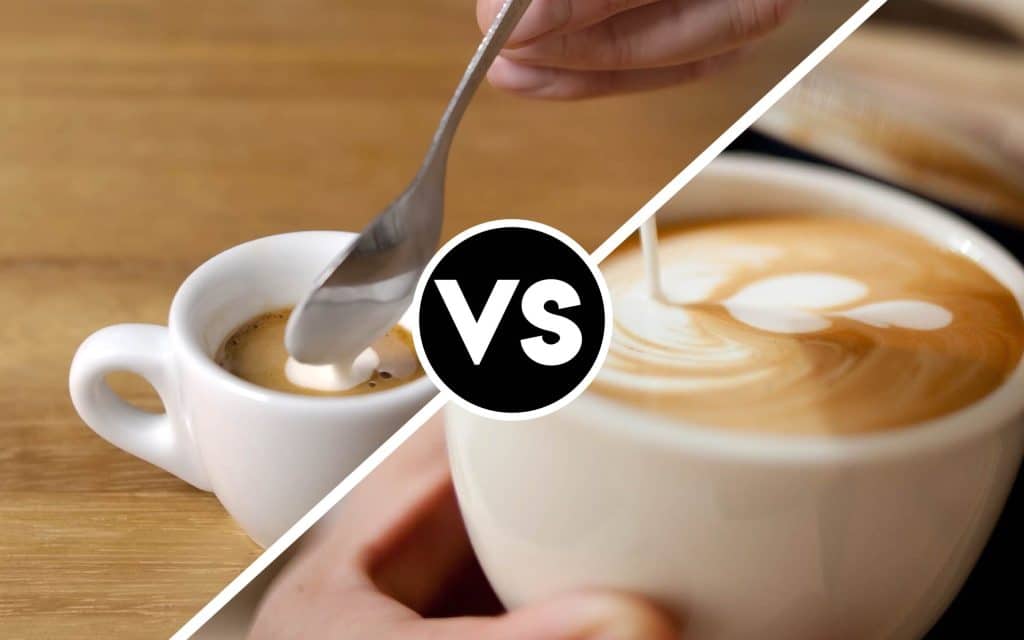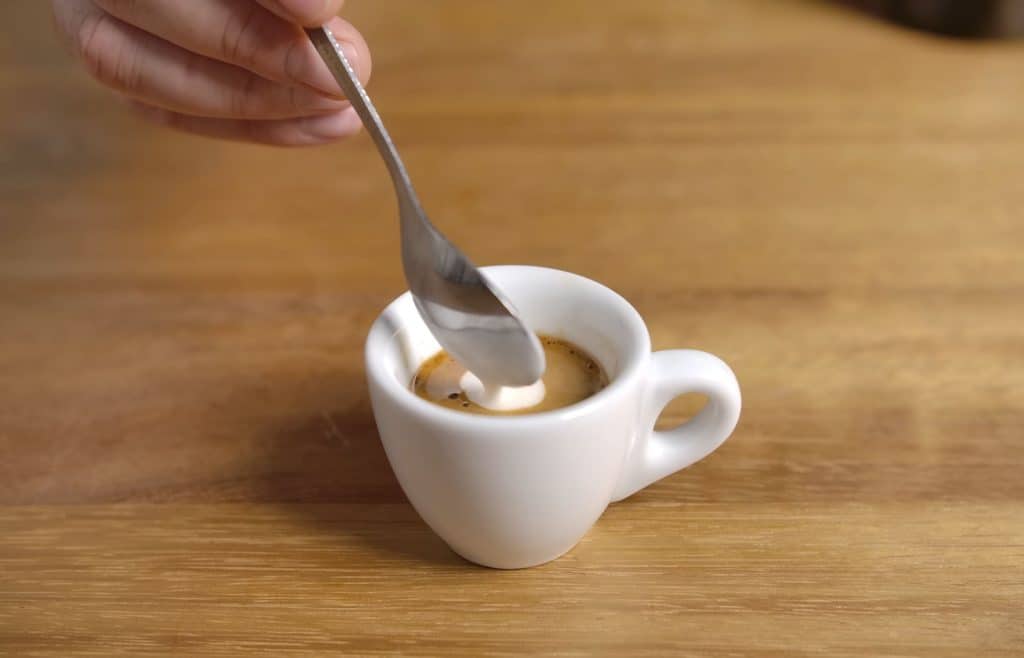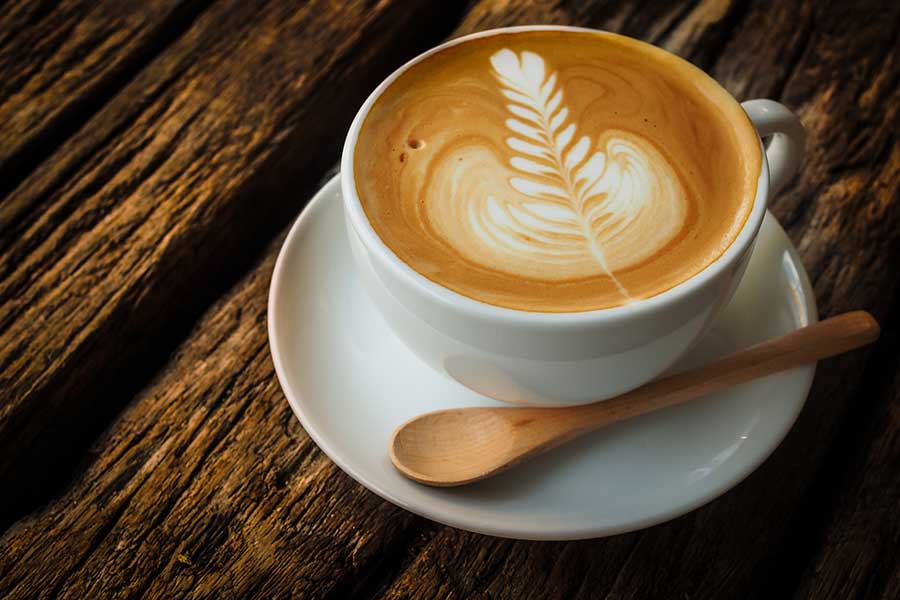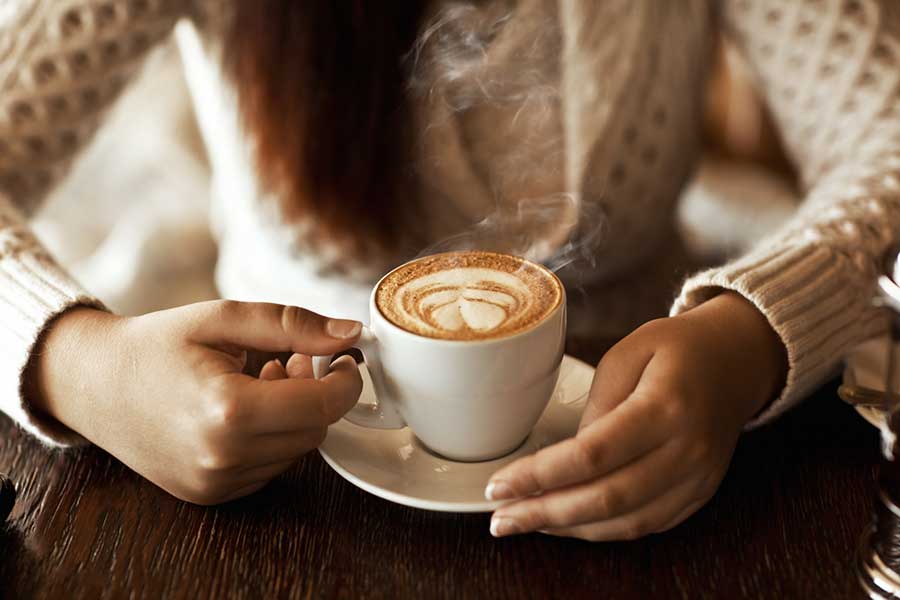Macchiato vs Latte: What’s the Difference?

Learning never stops in the coffee world and I’m happy you are here to dig deeper into this macchiato vs latte debate with me. Sometimes the differences between coffee drinks are black and white, but other times they are so subtle you will wonder whether it’s even worth it trying to understand the two.
In the case of macchiato and latte the differences seem subtle, but trust me, these two are unique drinks that will satisfy you in different ways. Before you order or make either one, take your time to fully understand them, from the flavor profile, appearance, and preparation to versatility and health concerns. Only then will you be able to make your best decision.
Let’s begin right away.
Main Differences Between Macchiato vs Latte
The main differences between latte vs macchiato are:
- A macchiato uses espresso and steamed milk, whereas a latte combines espresso, steamed milk, and a layer of microfoam.
- A traditional macchiato would have a milk-to-coffee ratio of 1:2, whereas a typical latte uses two parts milk and one part coffee (2:1).
- Because it has a higher ratio of espresso, a macchiato is rich in coffee flavors, whereas a latte has a more balanced delicate flavor due to containing more milk.
- The traditional macchiato can only be served hot, whereas lattes can be ordered either hot or iced.
- A traditional macchiato has a more reserved look, whereas a latte can be adapted into different looks to make it fancier.
Deciding between these two boils down to taste, brewing preferences, and health concerns.
Since it’s rich and bold, a macchiato would suit the user who wants to experience the coffee flavors more than anything else in their drink. If you are after a well-balanced, sweeter coffee beverage with a creamier texture, a latte would fulfill all your needs.
Battling excess weight? If yes, a latte will make you work harder to reach your goal because of the higher calories. You can either go longer between drinks to solve this problem, or you can go for a macchiato.
Both drinks follow a similar brewing formula, but if you want to be more adventurous, I would suggest a latte.
Latte vs Macchiato: Overview
Although milk size seems to be the major difference between macchiato and latte, there’s more to these two you deserve to know as a passionate coffee lover. Let’s look at each briefly.
Macchiato

Like most coffee beverages, macchiato was first made in Italy before spreading to the rest of the world. In Italian, the name means “marked,” “stained,” or “spotted.” This is in reference to the spot that forms on the top of the drink when espresso is poured straight into the steamed milk.
It is important that you use quality coffee beans while preparing macchiato because the coffee part of the beverage is what defines it.
Part of this drink’s culture is the way it is served. Traditionally, you could only order it in an espresso cup that could hold 2-3 fluid ounces. Coffee shops in Italy that hold to the old customs still serve macchiato the same way.
In the original version, a splash of milk is mixed with the espresso to subdue its strength a little bit and bring out a desirable flavor and texture, but outside of Italy, the drink has been adapted into many forms.
You might get one that’s flavored with sauces and different kinds of syrups, which Italians following the original method would disapprove of, but the rest of the world seems to love their macchiato that way. Let’s look at the most common variation.
Latte
Latte is what many Americans consume today. Instead of having more espresso, a latte macchiato uses more steamed milk. Syrups and sauces are sometimes added to flavor it. This makes the resulting drink sound like a latte, but the milk is still significantly less and there’s no thick microfoam topping.

Even the preparation is the reverse of what you would do when making a latte. In both a standard macchiato and a latte macchiato, espresso is poured over a base of steamed milk, forming defined layers of coffee and cream throughout the beverage.
Walk into any Starbucks or Dunkin outlet and you will have a variety of latte macchiato options to choose from.
Other macchiato varieties you can find in coffee kiosks and make at home include:
- Cloud macchiato
- Hazelnut macchiato
- Caramel macchiato
- Creme brulee macchiato
Latte
Latte, too, has a rich Italian history. Caffè latte is the drink’s complete name but most people prefer to call it a latte, which means “milk coffee.” This drink is over a century old and is just as loved today as it was many years ago.
Ordering a latte in different countries won’t get you the same thing. In Germany, for instance, a latte is called “milchkaffee.” Spain and Italy also understand latte to be milk and that’s exactly what you will be served. The French call it cafè au lait and their version often has at least two double shots of espresso.
More milk is used in preparing a latte, often topped up with foamed or frothed milk, making it more creamy and sweet. To make it, start by pulling a single or double shot, depending on your preference, and then create steamed milk with froth for pouring over the coffee.
Latte art is often included to make the drink fancier. The traditional latte has around 5mm of foam; when you reduce it to about 2mm, the resulting beverage is a flat white instead of a latte.
In most coffee shops around the world, a latte remains the most popular drink on the menu. In the US, it comes in a variety of flavors to match our unique tastes. From chocolate, pumpkin spice, and caramel to almond, peppermint mocha, and oat, the list of options goes on.
At Starbucks or similar coffee shops, you can request a syrup or sauce of your choice to top up your latte, from vanilla and chocolate syrup to cocoa powder and whipped cream.
What’s more, you can have the drink served hot or iced.
Feature Comparisons
This is where I dissect the individual characteristics of the two drinks to help you have a better understanding of both and choose the most suitable option.
Flavor
Although the ingredients are the same, these two vary significantly in flavor.
The traditional macchiato, as I mentioned earlier, uses two parts coffee and one part milk to make the espresso flavor more pronounced. Even though milk adds a light sweetness to the drink, the idea behind macchiato is to have a rich bold espresso drink subdued by a splash of steamed milk.
A latte, on the other hand, combines two parts milk and one part coffee, making it milkier with a luxurious mouthfeel and light coffee flavor. You will detect the notes of espresso but the star of the show will be the steamed milk. Overall, the flavor is delicate and well-balanced.
The best part about a latte is the freedom to add a flavoring(s) of your choice to personalize your beverage.

Appearance
These two drinks look different. This can be attributed to the ingredients used and the preparation method.
A traditional macchiato doesn’t have a lot going on visually. It’s normally golden brown and a bit whitish at the top. Its non-traditional counterpart, the latte macchiato, has a more interesting look. Thick steamed milk dominates the base, followed by a hint of brown in the middle and a layer of foam at the top.
A latte is predominantly white with hints of brown evenly distributed throughout the milk. Although it’s a delicate process, you can still layer it and add microfoam on top of your shot to create latte art. It’s easy to create a stunningly visual beverage when it comes to lattes.
Versatility
Which of these two beverages can be adapted to suit unique tastes and preferences? That’s what versatility is all about.
The classic Italian macchiato (or what we call traditional macchiato) only uses espresso and milk and is often served in a smaller cup.
A non-traditional macchiato, on the other hand, knows no bounds. You can serve the size of your liking and flavor it as you wish, but there aren’t many recipes to choose from as is the case with a latte. In coffee shops, be it Starbucks or your local cafe, you will only have a few options to choose from.
Lattes, as you already know by now, use more ingredients. You have foamed milk at the top for a start. You can then add flavorings, sauces, and other toppings to further customize your drink.
When it comes to varieties available at coffee shops, there’s no end to latte options. You will have a long list to choose from, and you can also make those beverages at home.
Calories & Fat Content
Plain coffee has no calories, but as soon as milk, flavorings, and other toppings are added to it, its nutritional content changes. Both macchiato and latte have calories, but the level varies significantly.
One fluid ounce of macchiato has about 5 calories, 0.28 grams of fat, and 0.26 grams of protein, while a similar serving of latte will have 8 calories, 0.34 grams of fat, and 0.55 grams of proteins. If you were to have a full cup of either, the difference in nutritional content would be more significant.
Even without toppings, a latte still has more calories, fats, and proteins than a macchiato. When it’s flavored, the level will be even higher.
Calories and fats are not entirely bad. Your body needs both to operate, but you must be sure you are consuming the right amount. If you are struggling to keep your weight healthy, you might want to cut down on lattes. Instead, go for a macchiato or a coffee beverage with fewer calories.
Speak to a health expert to know how many calories you need per day.
Macchiato Versus Latte: The Winner
You will agree with me that these two Italian drinks are each special in their own right. On one hand, you have a beverage that has a more intense espresso flavor and moderate sweetness, while on the other, there’s a creamier balanced drink that’s sweeter. What’s best for you comes down to taste and preference.
If you want to experience more varieties of the same drink or explore your brewing experience with it, a latte would satisfy your interests. You can also refine its appearance to create a drink that’s more pleasing to the eye.
Unfortunately, lattes are not the healthiest option when it comes to issues of weight loss and management. In those respects, you are better off with a macchiato.
Alex is a web developer, writer, and marketer. He has degrees in English, Computer Science, and Mathematics and is always learning as much as he can. Alex operates a series of websites for both client and personal use. Alex usually starts the day with shot of espresso or an Americano and then follows up with a Cafe Au Lait with lunch. He enjoys trying new coffee beans and finding new ways to prepare it, but most days prefers to keep things simple.





